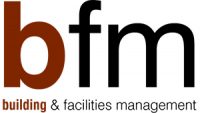Who is the ‘responsible person’?

Fire safety technology – such as smoke control systems – is designed to save lives and protect property in a fire. The Regulatory Reform (2005) Fire Order, often known as the RRO, governs the legal responsibility to ensure these systems are suitably maintained in order to do their job properly if and when called upon.
The RRO lays the obligation for ensuring this maintenance takes place at the feet of someone it describes as the ‘responsible person’ – someone who will end up heavily fined or even in jail if the legislation isn’t given its due regard.
But who is this ‘responsible person’? The chances are it isn’t your fire alarm provider or your health and safety contractor. If you’re a building owner or facilities manager, it could well be you…
In the RRO, “responsible person” is defined as:
- a) in relation to a workplace, the employer, if the workplace is to any extent under his/her control
- b) in relation to any premises not falling within paragraph (a):
the person who has control of the premises (as occupier or otherwise) in connection with the carrying on by him/her of a trade, business or other undertaking (for profit or not); or
the owner, where the person in control of the premises does not have control in connection with the carrying on by that person of a trade, business or other undertaking
To further confuse matters, there are other ways of defining the responsible person as laid out in, for example, the government’s own fire safety guidance:
- an employer
- the owner
- the landlord
- an occupier
- anyone else with control of the premises, for example a facilities manager, building manager, managing agent or risk assessor. The Fire Safety Order also applies if you have paying guests, for example if you run a bed and breakfast, guesthouse or let a self-catering property.
So if you fit the descriptions above, you may actually be the ‘responsible person’. If there’s more than one responsible person, you have to work together to meet your responsibilities, but generally it’s important that the correct person is identified and his or her responsibilities laid out clearly.
In many cases, this translates to a building’s facilities manager. The duty of care to generate and operate fire risk assessments is all part of the modern FM’s remit and we find in many cases they appreciate the subtle difference between fire alarms, sprinkler systems and smoke control systems.
Government guidance goes on to state that as the responsible person you must:
- carry out a fire risk assessment of the premises and review it regularly
- tell staff or their representatives about the risks you’ve identified
- put in place, and maintain, appropriate fire safety measures
- plan for an emergency
- provide staff information, fire safety instruction and training
You can see how vital all these duties are, which is why we’d always recommend subcontracting to a trusted, suitably-accredited supplier who will understand the technology and legislation, aiding you with that burden of responsibility as the ‘responsible person’. Unfortunately, we’ve seen plenty of instances of smoke control systems being compromised by maintenance undertaken or commissioned without proper technical or legislative understanding.
About Brakel Airvent
Brakel Airvent is the UK’s leading provider of whole-life service to smoke control systems.
The company – based in Cardiff, south Wales – specialises in planned preventative maintenance, emergency repairs and cost-effective refurbishment packages that are staged to minimise financial impact and disruption to building users. It has a national network of service engineers and in-house CFD and fire engineering expertise to ensure its solutions are up to the important task of saving lives and protecting property, in line with legislation such as the Regulatory Reform (Fire Safety) Order 2005.
About smoke control
A legislative requirement, smoke control systems are activated when a fire breaks out in a large building. They remove hot, hazardous smoke or compartmentalise it to allow for clearer escape routes and easier fire fighter access.
Many systems have multiple purposes including natural cooling ventilation or fume management.





